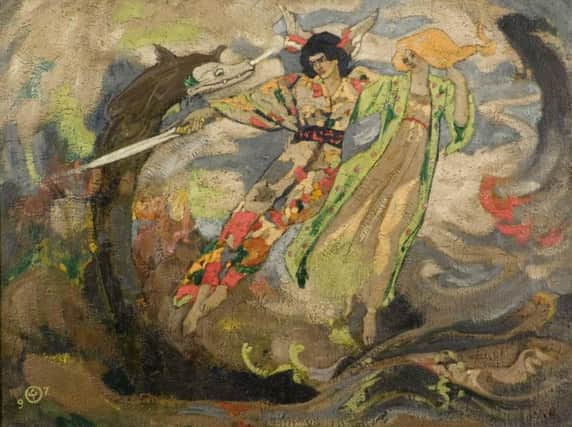Jute, jam and drawing: A survey of Dundee's fortunes through its art scene


Independent and Individualist: Art in Dundee 1867-1924 by Matthew Jarron | Abertay Historical Society/University of Dundee, 232pp. £12
Dundee, the Florence of Scotland: far-fetched, certainly, but clearly the Colourist painter Leslie Hunter who made the analogy thought there was more to art in Dundee than we generally suppose. At the opposite pole, however, is the opinion of painter, WG Burn-Murdoch, who described Dundee as “a very ugly blot on the face of nature.” Clearly, Dundee was not Florence. These contrasting opinions are quoted in Independent and Individualist: Art in Dundee 1867-1924 by Matthew Jarron who makes the case that Dundee, even if it was not Florence, was nevertheless a thriving centre of the visual arts.
Advertisement
Hide AdAdvertisement
Hide AdFor a while the city certainly did enjoy great prosperity and international connections. Dundee-born artist, John Duncan, wrote about the “strange ships from strange places” in Dundee harbour and their equally strange crews. As witness of the city’s international links, when a statue of Burns was erected, it was acquired at half-price from the artist John Steel because it was the second cast of a statue commissioned in New York and was erected almost simultaneously. (At the unveiling, McGonagall, the city’s lugubrious bard, had to be prevented from usurping the podium to recite an ode.)
Dundee became a city in 1889 and at the height of its prosperity, its jute magnates and other rich men did spend a lot of money on art. Many of their fortunes were short-lived, however, and most of their collections were dispersed before the century’s end. While they and the jute trade thrived, however, art was big business. From 1873, a series of major Fine Art Exhibitions were organised and continued sporadically until 1924 (giving the book its closing date.) Generally selling shows, at the height of their success they realised quite startling amounts of money and also saw large numbers of visitors. If money earned was the principle measure of an exhibition’s success however, in contrast the city piqued itself on how little it spent on the arts, largely no doubt because the generosity of its magnates relieved it of the obligation.
The only survivor of the great collections formed at the time was until recently that of James Guthrie Orchar, left to the town of Broughty Ferry, but shamefully dissolved into Dundee’s collection some years ago, its purpose-built gallery lost forever. Nevertheless, Dundee’s age of prosperity has left its mark. The MacManus Gallery that houses the city’s collection began as the Albert Institute, the largest monument to Victoria’s consort outside of London, it was claimed, and ready for use in 1867. When in 1889 the Victoria Galleries were added, they were among the first in the country to be lit by electric light.
Duncan of Jordanstone College of Art, now part of Dundee University, began as Dundee Technical College and School of Art, but later took the name of its benefactor, James Duncan of Jordanstone and with its own art school, Dundee also bred artists, though many left to work elsewhere. One leading figure, John Duncan, is usually thought of as at the centre of the Celtic Revival in Edinburgh. He was closely associated with Patrick Geddes and Matthew Jarron makes a good case for Dundee, where Geddes held the chair of Botany, as an equally important centre of this fin-de-siècle movement. The too brief career of Duncan’s pupil, George Dutch Davidson, certainly supports this view. He died aged just 21, but the work he left suggests he could have been a pioneer of Modernism. Other artists who are less well known are also brought to light here. William Barclay, for instance, was a distinguished landscape painter while James Douglas and WB Lamond are among several other painters whose work deserves to be better known. David Foggie, who taught at Edinburgh, also emerges here as a distinguished figure painter.
DC Thomson continues to produce illustrated comics and magazines in Dundee and one of the most interesting stories told in the book is how the city was a pioneering centre for the production of illustrated newspapers and magazines, not just by Thomson, but also by the rival firm John Leng & Co.
Altogether this is a richly informative book. It is very modestly priced, but if it had cost a little more, there might have been money to spend on the layout to make it easier to read and give the pictures more room. Nevertheless it is a valuable addition to the story of Scottish art.